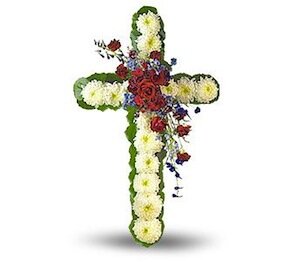The history of funeral flowers is a long and rich record that points back to approximately 62000 BC. This is traced through the scientific documentation of the Shandiar Cave excavation located in Iraq, performed and verified by Dr. Ralph Solecki. In this particular study excavation, several entombments were dug up and in due course confirmed to be the oldest among the many sacred activities attributed to the early times. Soil and pollen analyses were done to test how “old” the entombments were; and the results were indicative to the use of flowers to give tribute to the deceased. Basing on this conclusion, it is rightfully claimed that funeral flowers were already been part of the sorrowful mourning tradition for the passing of a loved one even before certain flowers were attributed to the death and resurrection of Christ.
Flowers and Their Historical Funeral Purposes
Back in the day, flowers did not have such comprehensive symbolism. Nonetheless, they were as significant in funeral services because of their practical purpose—to mask the intolerable stench of the decaying body. Since the use of formalin and other preserving chemicals were not yet developed, or probably not yet commonly used, there was a need to create a diversion so as not to drive away people who wanted to visit and pay tribute to the deceased. Perfumes have existed for a very long time, but they were too costly to use during funerals. Flowers were naturally scented, and were widely available in most locations which are the reasons why they were used in funerals. In addition, they brought a serene and scenic view to those who came to the holy ritual.
The Development of Symbolisms and a More Comprehensive Tradition
As generation after generation passed, the use of funeral flowers has gained more significance in different religions and traditions. At the same time as races intermixed and different cultures merged, funeral flowers and their comprehensive purpose became a standard practice during funeral services. Almost all cultures welcome the idea of sending different funeral flower arrangements to console the bereaved and send messages of love and letting go to the deceased. Each flower used in creating the most artistic funeral flower ideas has its corresponding meaning and symbolism that is acknowledged in nearly all cultural groups and faith. From its primary purpose of providing a scent of freshness during funeral tributes, flowers are now used to convey messages of comfort to those who are grieving. They also represent the character of the person who passed away. Aside from these, funeral flowers are acknowledged to give a blissful scene to those who mourn for their loved one’s departure. As they try to move on later with their own lives, a good and scenic memory of the funeral service can help take away the sorrow in their hearts.
Flowers are like humans. They are made beautiful, but their beauty does not last forever. As they wilt away and decompose, so do humans—it is only up to us whether we make the most out of our life as it blooms. Flowers, in general, represent humans—and this is the reason why they have a special place in people’s lives and deaths. We can derive many funeral flower arrangement ideas from the rich history of this tradition that truly defines us as human.

